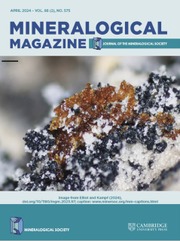
Figure 1. Prof Ekhard Salje (1946–2025).

Figure 2. Ekhard in recent years - writing and teaching.
Members of the Mineralogical Society will have been greatly saddened to hear of the passing of Professor Ekhard Salje in February, at the age of 78. Ekhard was well known within the University of Cambridge and widely across the international communities of scientists in Physics, Materials Physics and Earth Sciences.
Ekhard was born in Hannover and would occasionally describe the difficult experience of growing up in severely straitened circumstances immediately after the war. He began to prosper at University where his early scientific interests in group theory evolved into crystallography by the time that he became Professor at a young age in the Institute of Mineralogy, Leibniz University Hannover. Then, as in all the ensuing years, his research focussed relentlessly on the relationship between the structure and properties of materials. In particular, he was interested in fundamental aspects of phase transitions that occur within crystals in response to changes in temperature, pressure and external field.
After joining the Department of Earth Sciences in Cambridge as a lecturer in 1985, Ekhard was quickly promoted to a Personal Chair in Mineral Physics before transferring to the established University Chair of Mineralogy and Petrology. He was Head of Department between 1998 and 2008 and continued his remarkable productivity after formal retirement in 2013. Google Scholar lists 882 publications with over 33,000 citations. He will be remembered by PhD students as a constantly encouraging and inspiring supervisor and by undergraduates for lectures which were usually pitched at a level well above their competence but which were never dull.
Ekhard’s expertise was in three aspects of modern solid state physics - theory, experiment (including development of new experimental apparatus) and computer simulation. He used physics to help understand minerals and minerals to provide new perspectives on physics, always with strong collaboration across the disciplines. For example, in the 1980’s he treated albite as a ferroelastic material with coupling between order parameters for separate displacive and cation ordering effects using Landau theory. This analysis essentially provided what has become a universally accepted approach for the characterisation of transformation behaviour in ferroic and multiferroic materials. His landmark book, “Phase transitions in ferroelastic and co-elastic crystals” published by Cambridge University Press in 1991, remains the standard for understanding phase transitions using Landau theory.
In the 1990’s Ekhard was comparing tweed microstructures in the newly discovered high Tc superconductors with similar microstructures in cordierite and in the 2000’s he was using metamictisation of natural zircons to derive a physical law for radiation damage relevant for repositories of radioactive waste from the nuclear industry. More recently, he had been intent on following up ideas for exploiting the unique properties of domain walls in crystals for their potential to provide functioning devices on a nanoscale as “domain wall engineering”, following his discovery that twin walls in CaTiO3 are polar. His interest was applied equally to twinning in biogenic and inorganic calcite which became a frequent topic of conversation at coffee in the Department, even when his health was clearly failing. In another recent area, he developed a theory for describing acoustic emissions from mild and wild avalanches of crack propagation. This applied equally to earthquakes and to domain wall motion in ferroelastic crystals under stress, with a difference in length scale of ∼14 orders of magnitude. Typically, he was interested in showing that the same power law could be used to inform the manner in which human kidney stones are broken down by laser lithotripsy in a clinical setting. In his last months he was constantly pressing co-authors to finish their contributions to papers and those of us who worked with him know that his scientific career ended at a time when he still had so much more to offer.
Ekhard received numerous honours and medals, including the Schlumberger Award of the Mineralogical Society in 1998. He was elected to the Leopoldina, Germany (1994), to Fellowship of the Royal Society (1996), and to Foreign Membership of the Reial Acadèmia de Ciències i Arts de Barcelona (2011). He was Chevalier dans l’ordre des Palmes Academiques, France (2004), and was awarded the Cross of the Order of Merit of the Federal Republic of Germany (2006), the highest order for a scientist. He received the Friendship Medal of the People’s Republic of China (2024).
Ekhard travelled a great deal, particularly in recent years. He loved to work with research groups around the world, including in France, Germany, Spain, Japan, the USA and China. He will be remembered by many young, aspiring scientists who he helped and encouraged, as well as by the lead researchers, in all these groups. Similarly, he and his wife Lisa took close personal care for and interest in graduate students and visitors from all over the world between 2001 and 2008 when he was President of Clare Hall in Cambridge. He loved the arts and was always happy to engage with anyone on topics of art, literature, music and philosophy. It is probably less well known that he was a talented painter. He leaves five children and eleven grandchildren, of whom he was immensely proud.
Some links to other obituaries:
https://www.tandfonline.com/doi/full/10.1080/01411594.2025.2491205?af=R
https://www.iucr.org/news/newsletter/volume-33/number-2/ekhard-salje,-frs-1946-2025



